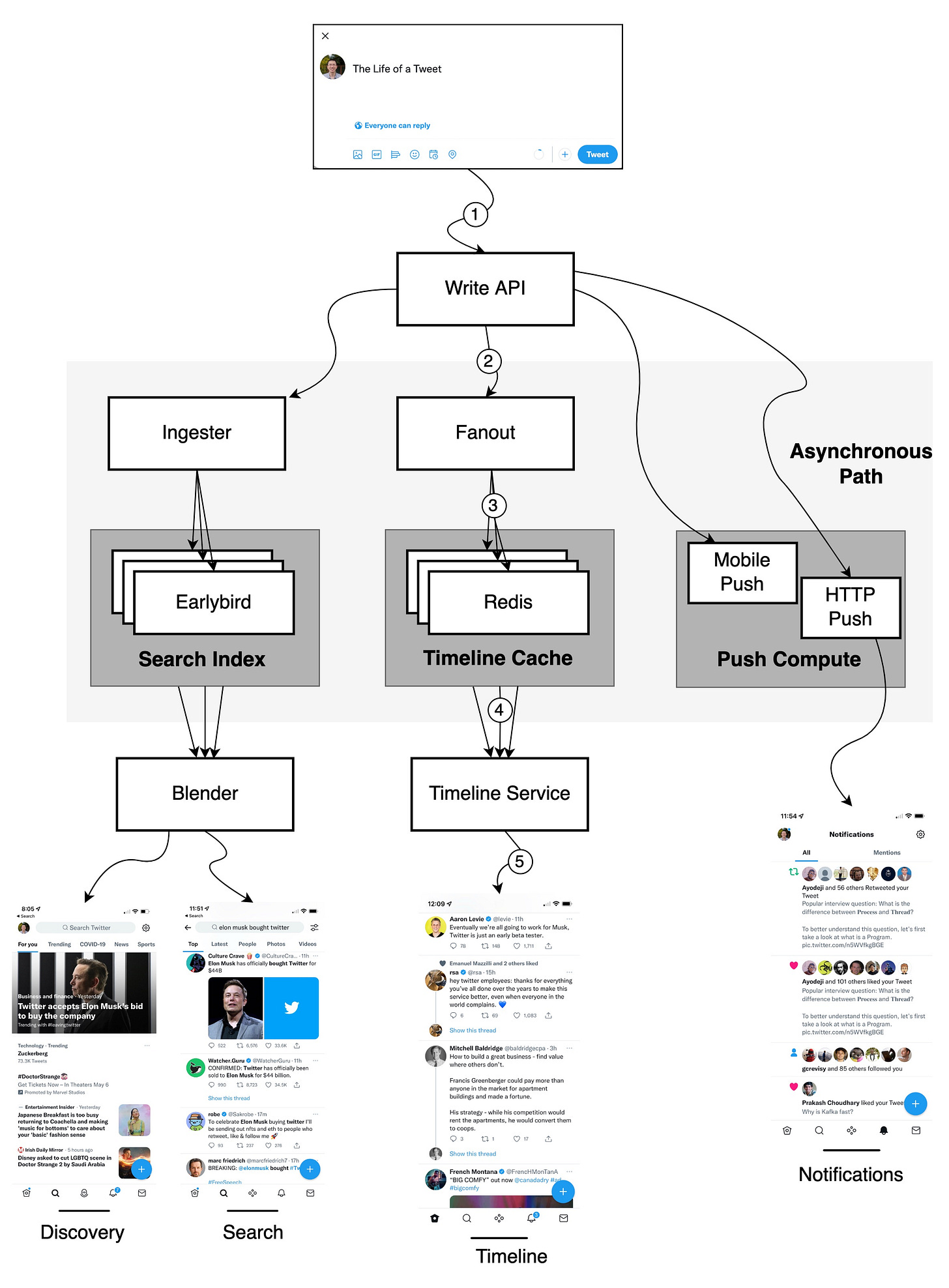Interview question: Design Twitter (Episode 5)
In this newsletter, we will talk about the following:
Process vs Thread
Interview Question: Design Twitter
A visual guide on how to choose the right Database.
Unique ID Generator
Popular interview question: What is the difference between Process and Thread?
To better understand this question, let’s first take a look at what is a Program. A Program is an executable file containing a set of instructions and passively stored on disk. One program can have multiple processes. For example, the Chrome browser creates a different process for every single tab.
A Process means a program is in execution. When a program is loaded into the memory and becomes active, the program becomes a process. The process requires some essential resources such as registers, program counter, and stack.
A Thread is the smallest unit of execution within a process.
The following process explains the relationship between program, process, and thread.
1. The program contains a set of instructions.
2. The program is loaded into memory. It becomes one or more running processes.
3. When a process starts, it is assigned memory and resources. A process can have one or more threads. For example, in the Microsoft Word app, a thread might be responsible for spelling checking and the other thread for inserting text into the doc.
Main differences between process and thread:
🔹 Processes are usually independent, while threads exist as subsets of a process.
🔹 Each process has its own memory space. Threads that belong to the same process share the same memory.
🔹 A process is a heavyweight operation. It takes more time to create and terminate.
🔹 Context switching is more expensive between processes.
🔹 Inter-thread communication is faster for threads.
Over to you:
1). Some programming languages support coroutine. What is the difference between coroutine and thread?
2). How to list running processes in Linux?
Interview Question: Design Twitter
This post is a summary of a tech talk given by Twitter in 2013. Let’s take a look.
The life of a Tweet
1️⃣ A tweet comes in through the Write API.
2️⃣ The Write API routes the request to the Fanout service.
3️⃣ The Fanout service does a lot of processing and stores them in the Redis cache.
4️⃣ The Timeline service is used to find the Redis server that has the home timeline on it.
5️⃣ A user pulls their home timeline through the Timeline service.
Search & Discovery
🔹 Ingester: annotates and tokenizes Tweets so the data can be indexed.
🔹 Earlybird: stores search index.
🔹 Blender: creates the search and discovery timelines.
Push Compute
🔹HTTP push
🔹Mobile push
Disclaimer: This article is based on the tech talk given by Twitter in 2013 (https://bit.ly/3vNfjRp). Even though many years have passed, it’s still quite relevant. I redraw the diagram as the original diagram is difficult to read.
Over to you: Do you use Twitter? What are some of the biggest differences between LinkedIn and Twitter that might shape their system architectures?
A visual guide on how to choose the right Database.
Picking a database is a long-term commitment so the decision shouldn’t be made lightly. The important thing to keep in mind is to choose the right database for the right job.
Data can be structured (SQL table schema), semi-structured (JSON, XML, etc.), and unstructured (Blob).
Common database categories include:
🔹 Relational
🔹 Columnar
🔹 Key-value
🔹 In-memory
🔹 Wide column
🔹 Time Series
🔹 Immutable ledger
🔹Geospatial
🔹Graph
🔹Document
🔹Text search
🔹Blob
Thanks, Satish Chandra Gupta
Over to you - Which database have you used for which workload?
Unique ID Generator
IDs are very important for the backend. Do you know how to generate globally unique IDs?
In this post, we will explore common requirements for IDs that are used in social media such as Facebook, Twitter, and LinkedIn.
Requirements:
🔹Globally unique
🔹Roughly sorted by time
🔹Numerical values only
🔹64 bits
🔹Highly scalable, low latency
The implementation details of the algorithms can be found online so we will not go into detail here.
Over to you: What kind of ID generators have you used?






Big fan of your work and book. I've been reading your blogs regularly.
One request: Can you please also add the sources for the content. It would be helpful to explore that in detail.
Fyi, I love your content in general, but this twitter design article misses the use case/functional breakdown part, which is the thing I love the most about your content (like your book).
Context: I am a product manager and I read your book to understand how to do function/api/system design based on high-level product solution (e.g. eCommerce payment -> pay in and pay out). There are a lot of internet articles like this twitter article (which feels like architecting) but there are very few article about functional design (or at least I don't know how to find them, searching by keywords is quite futile)